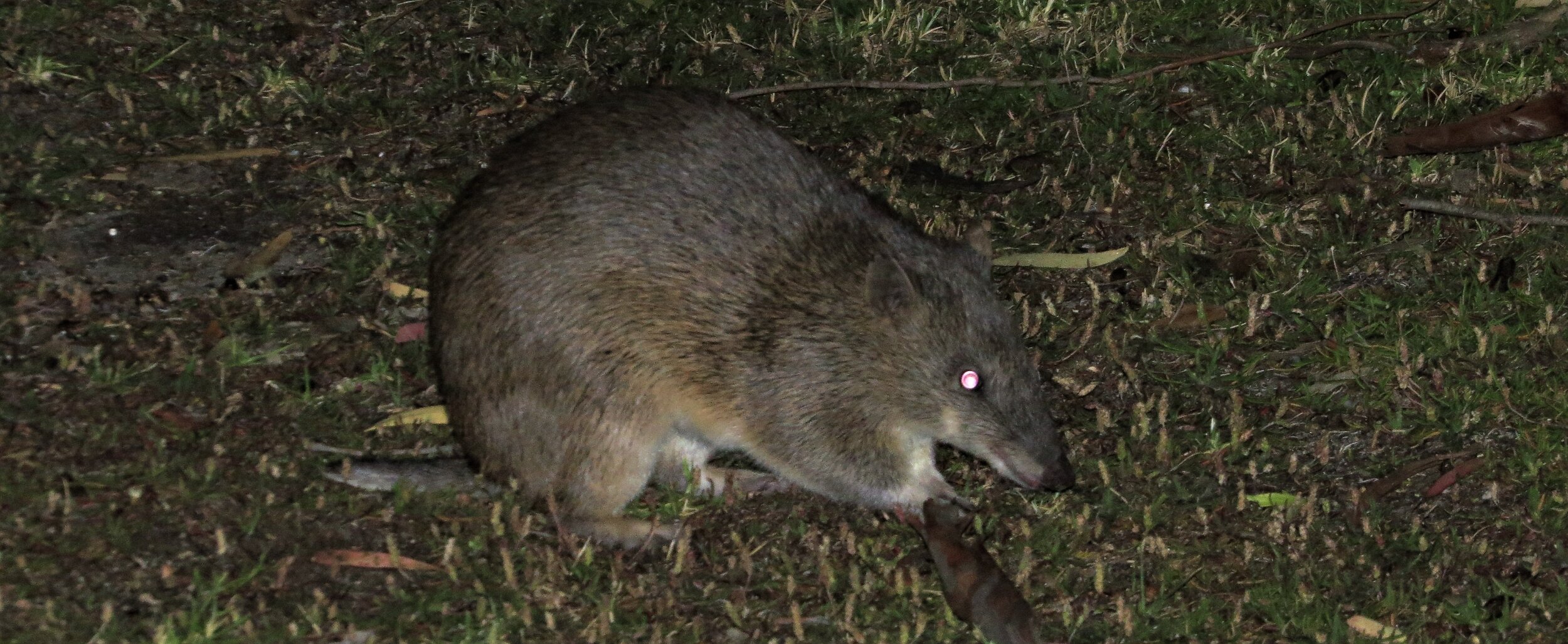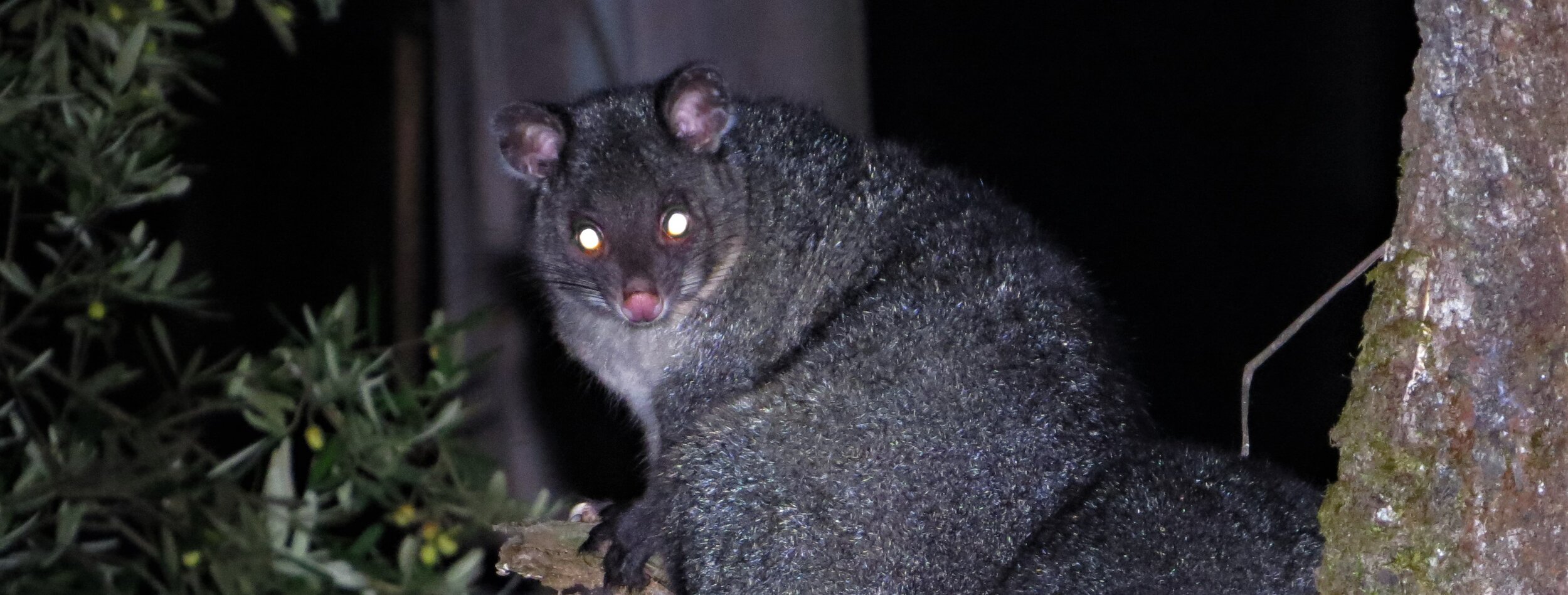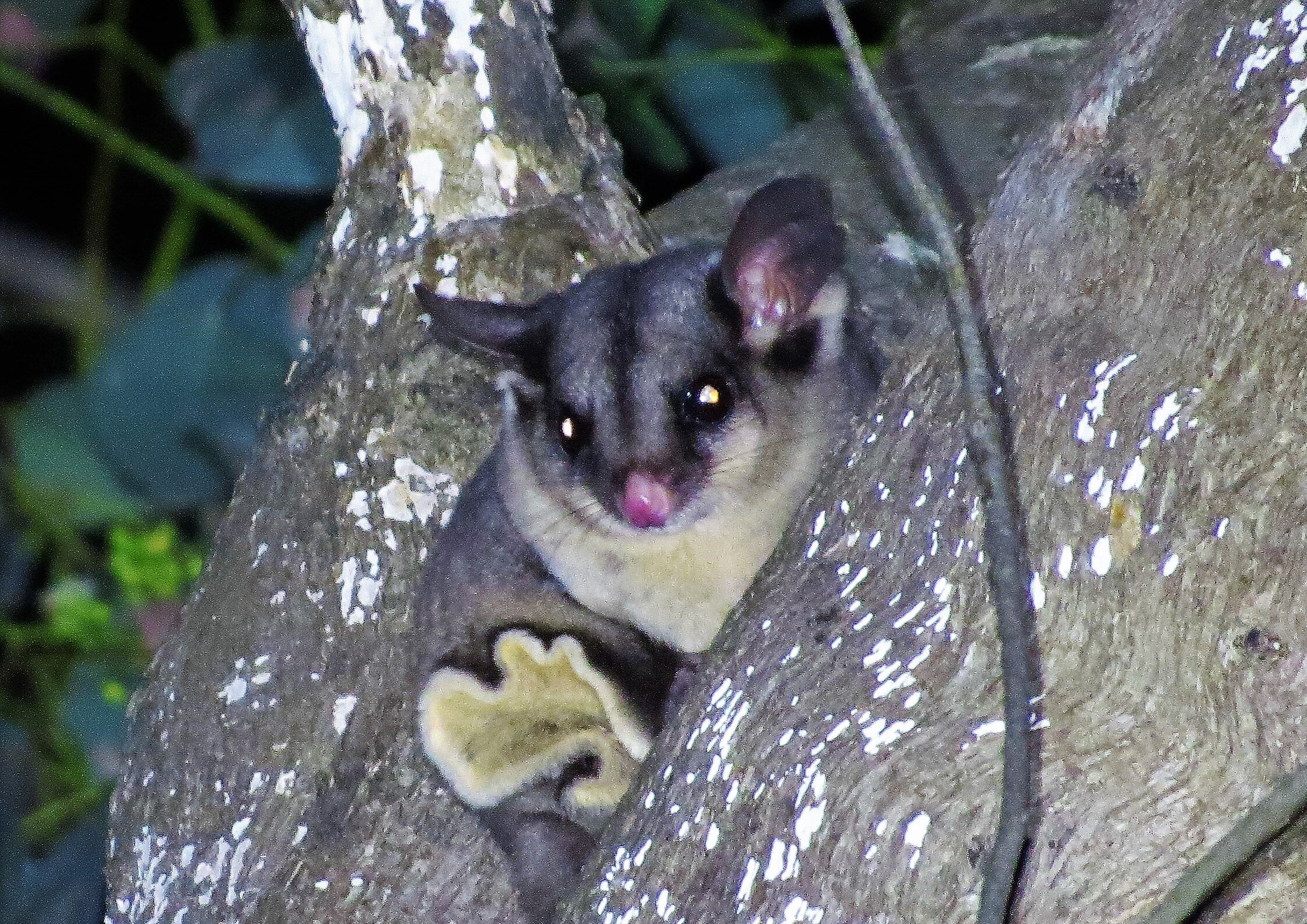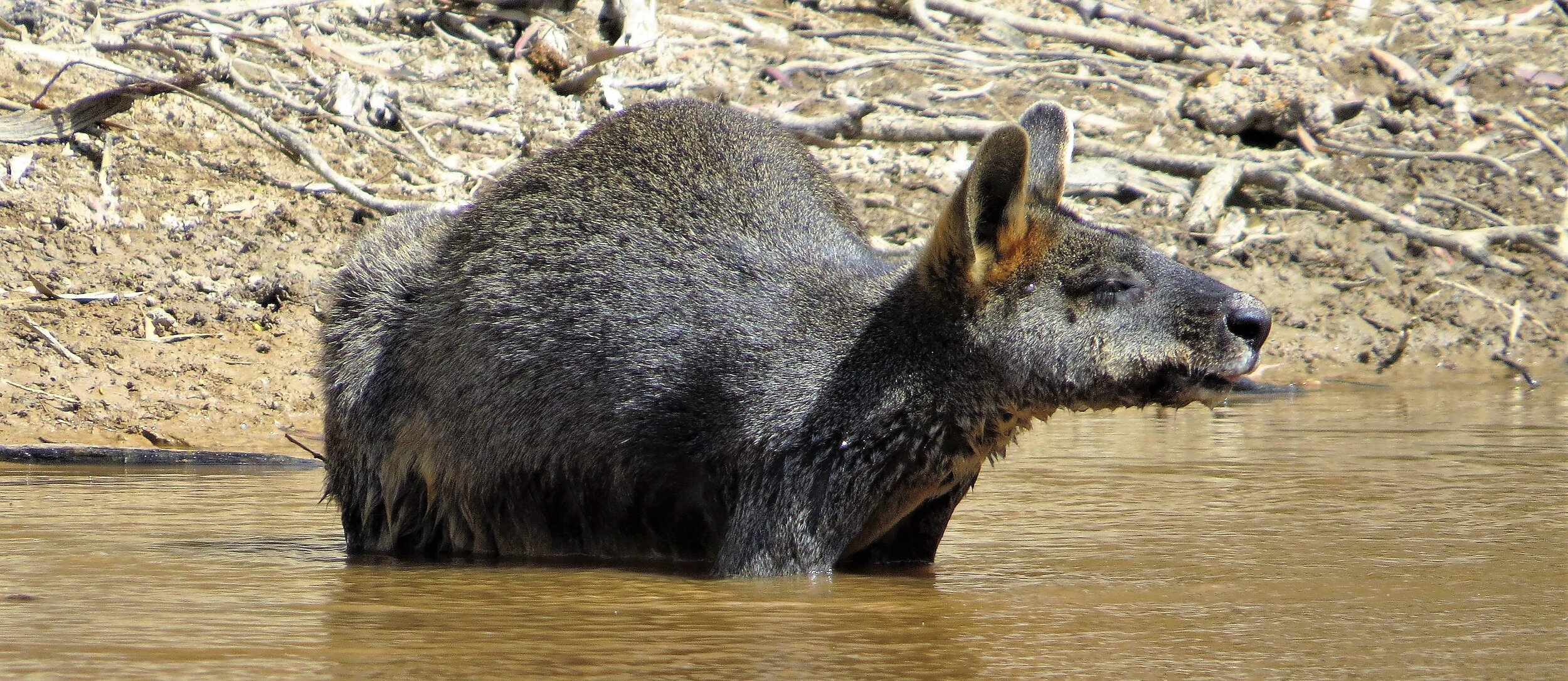Australia is known for it’s iconic and unique animals, which are high on most tourist’s wish list during a visit “downunder”.
Many of Australia’s small and medium sized mammals have become extinct or very rare since European settlement due to habitat loss and especially predation by introduced predators such as the Red Fox and Feral Cats. Local efforts to recover these animals are showing some success. The larger macropods and tree living possums and gliders remain fairly common. Given some time and effort many interesting critters may be observed. Expensive thermal imaging gear is a useful tool in locating the smaller animals at night. Kangaroos, Wallabies, Koalas, Wombats, Possums, Gliders and Platypus may all be seen quite close to Melbourne
Below is a list of those animals encountered during birding tours with an indication of how likely an observation may be.
MAMMALS
Short-beaked Echidna (Tachyglossus aculeatus), one of the two monotremes (egg-laying mammals). Mostly nocturnal but also regularly active in daytime especially in winter and the spring breeding season. Widespread throughout Victoria and fairly regularly encountered, but unpredictable.
Platypus (Ornithorhynchus anatinus), the other monotreme, the aquatic Platypus may be seen at dawn or dusk in certain lakes and rivers. On occasion there may be an opportunity to search for this species during a bird tour with one or two sites on the outskirts of Melbourne fairly reliable.
Yellow-footed Antechinus (Antechinus flavipes) found in the box-ironbark woodlands of central and southern Victoria, often active in the daytime and quite common where there is abundant fallen timber, so seen with some regularity. Antechinus are famous for the fact all the males die after their first mating season at 12 months of age.
Agile, Dusky and Swamp Antechinus. These three species occur in wetter habitats of southern and eastern Victoria. Difficult to observe but during the mid winter breeding season they may be active during the day
Dusky Antechinus in the Otway Ranges
Brush-tailed Phascogale (Phascogale tapoatafa) A difficult to observe inhabitant of dry woodlands. Also known as the Tuan. Nocturnal, arboreal and with a distinctive black bottle-brush shaped tail
Fat-tailed Dunnart (Sminthopsis crassicaudata) This carnivorous marsupial is a nocturnal inhabitant of open habitats in northern and western Victoria. Regularly seen when spotlighting on native grasslands of the northern plains. Live in small burrows or cracks in the ground
Southern Brown Bandicoot (Isoodon obesulus) occasionally seen whilst spotlighting in southern Victoria, particularly in the Little Desert, the Otway ranges and far east Gippsland. There is a population in the Cranbourne Botanic gardens. Digs in the topsoil in search of food. .
Long-nosed Bandicoot (Perameles nasuta) most likely to be observed in East Gippsland where it is a local inhabitant of wet sclerophyll forest. Nocturnal and has a distinct alarm call, occasionally seen during Gippsland tours . Has benefited from Project Southern Ark which is controlling foxes across the East Gippsland region
Koala (Phascolarctos cinereus) Fairly common in the Otway ranges where sightings can be guaranteed. Also occur widely across southern Victoria with observations possible in the You Yangs, the Brisbane Ranges NP, Strathbogie ranges and the Yarra valley near Melbourne, as well as throughout Gippsland
Common Wombat (Vambatus ursinus) Quite common in wetter grassy areas of eastern Victoria. Nocturnal and regularly seen whilst spotlighting in the mountain and coastal areas east of Melbourne. A close relative of the Koala, but lives on the ground and in large extensive burrow systems. Sometimes seen out in the daytime but often these are animals are unwell and suffering from sarcoptic mange spread by foxes.
Mountain Brushtail Possum or Bobuck (Trichosurus caninus) Inhabits the wetter forests in the eastern half of the state. Smaller rounder ears than the Common Brushtail Possum whose ears are longer than they are broad. Once hunted for its very warm pelt. Seen fairly regularly in the right areas
Common Brushtail Possum (Trichosurus vulpecula) Widespread and common throughout much of Victoria from urban areas to the inland river systems. Commonly seen wherever large trees are present. Nocturnal.
Common Ringtail Possum (Pseudocheirus peregrinus) Smaller than the Common Brushtail and with a prehensile tail that only has very short fur and is white on the tip. The animals very from grey to reddish brown with white underparts. They are common and widespread except in the dry north-west, and may even be seen in city parks.
Yellow-bellied Glider (Petaurus australis) A relatively common nocturnal inhabitant of tall wet eucalypt forests in the east of Victoria and the Otway ranges. Often heard in these areas, sometimes seen. They are quite shy under the spotlight and tend to look away so eyeshine is not as useful in locating them. They largely feed from sap weeping from wounds they themselves make on the trunks of eucalypts
Feathertail Glider (Acrobates pygmaeus) Fairly widespread in Victoria but difficult to observe in the wild. The world’s smallest gliding mammal
Leadbeaters Possum (Gymnobeledeus leadbeateri) An endangered gliding possum from the wet sclerophyll forests north-east of Melbourne.
Greater Glider (Petauroides volans) A nocturnal inhabitant of tall wet eucalypt forests in eastern Victoria. They are our largest gliding marsupial, the size of a cat. Reliably seen at certain locations to the east of Melbourne. They are usually observed in the canopy where they eat eucalypt leaves like a Koala. They are slow moving and with a very long bushy tail. Most animals are sooty brown with white underparts, but some are grey with a white head and tail
Sugar Glider (Petaurus breviceps) A quite common nocturnal inhabitant through much of central and southern Victoria. Quite frequently heard making their “yip yip” call and occasionally seen.They are very fast and active and can glide up to 90 metres. Recent studies in Tasmania where they were introduced has shown they raid the nests of the endangered Swift Parrot. Due to their cute looks they are kept by some as an exotic pet !
Squirrel Glider (Petaurus norfolcensis) These animals look similar to Sugar Gliders but have declined in Victoria and are fairly difficult to observe, inhabiting the drier woodlands on the north side of the Great Dividing range. Compared to the Sugar Glider they are slightly larger with longer fur on the tail which is never white tipped and a longer more pointed muzzel
Long-nosed Potoroo (Potorous tridactylis) Occurs in the coastal heathy woodlands of East Gippsland. A rare and localised nocturnal fungi eating marsupial.
Long-footed Potoroo (Potorous longipes) An endangered marsupial found only in East Gippsland and adjacent NSW. Have benefited from project Southern Ark which is controlling foxes in their range. Seen on a recent tour, east of Orbost in Gippsland. A fungi eating specialist, which despite recent fires is surviving and living on its preferred subterranean food source of native truffles
Red Kangaroo (Macropus rufus) Australia’s largest marsupial which occurs in the open plains of Wyperfeld NP, Murray-Sunset NP, and Hattah NP in far north-west Victoria as well as the riverine plains in NSW. Fairly frequently encountered. The male pictured here had been fighting another male for the rites to some females hence his bloodied neck
Eastern Grey Kangaroo (Macropus giganteus) The commonest species of Kangaroo in Victoria, and competes with the Red as Australia’s largest marsupial. Found widely except in the driest parts of the north-west. Mostly crepuscular and nocturnal, but also regularly observed resting in the daytime. Most common in areas with bushland, open areas and available water. Regularly seen. Can occur in large mobs.
Black/Swamp Wallaby (Wallabia bicolor) Quite common and widespread throughout southern and central Victoria. Occurs mostly alone. Occasionally tame. Regularly seen, either at night, or disturbed in daytime.
Western Grey Kangaroo (Macropus fuliginosus) The common Kangaroo in the drier parts of north-western Victoria including the mallee country. More adaprted to an arid environment than the Eastern Grey, they are slightly smaller with generally darker browner fur that contrasts clearly with paler grey underparts and ear fringe.
Red-necked Wallaby (Macropus Rufogriseus) Occurs most frequently in the Grampians NP, the Otways and East Gippsland. Crepuscular and nocturnal, normally shy, but occasionally in campgrounds. A pretty wallaby with rufous fur on its back and a white streak of fur on the side of the face
Many Bat species occur in Victoria. a small number are audible to the human ear, whilst for most a sound recorder programmed to recognise bat calls is required for identification. The most obvious bats though are the large Grey-headed Flying-Fox (Pteropus poliocephalus) Colonies may be found near Melbourne (Blue-tongue Bend in Yarra Bend Park), and in Gippsland (eg the Mitchell river near Bairnsdale) There are also colonies now in Bendigo and Shepparton in central Victoria. Leave their roosts at dusk to search for fruit and nectar. They are important pollinators in the landscape.
Rakali/Water Rat (Hydromys chrysogaster) An inhabitant of permanent waterways inland and on the coast. Previously hunted for their pelt but still fairly common and occasionally seen.They are resident at the St Kilda Pier where individuals regularly come out onto the rocks where the Little Penguins are found. Also reasonably common in the freshwater wetlands of northern Victoria
Mitchell’s Hopping Mouse (Notomys mitchellii) present in the dry north-western mallee country where its tracks in the sand are seen much more often that the animal itself.
Bush Rat (Rattus fuscipes) The most common native rat in Victoria found in southern Victoria mostly in dense wet vegetation.
Swamp Rat (Rattus lutreolus) A chumpy native rat found in southern Victoria’s wet and dense vegetation. Occasionaly active during the day.
Australian Fur Seal (Arctocephalus pusillus doriferus) Colonies occur on offshore islands, may also be seen from land in the open ocean.
Common Bottlenose Dolphin (Tursiops truncatus), Humpback Whale (Megaptera novaeangliae) and Southern Right Whale (Eubalaena australis) may all be seen in offshore waters in Victoria in the right season as well as many other less common marine mammals
A variety of introduced animals are also regularly seen in Victoria including European Rabbit, European Hare, Red Fox, House Cat, Goat, Sambar Deer, Fallow Deer
























